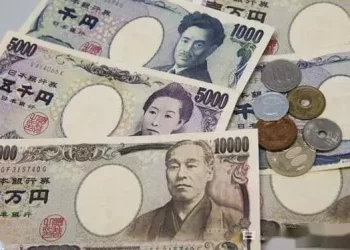In a globalized economy, currency exchange rates play a pivotal role in determining the value of transactions across borders. For individuals and businesses engaging in international trade or travel, understanding the exchange rate between currencies is crucial for making informed financial decisions. This article delves into the process of converting $8000 Canadian Dollars to Indian Rupees, exploring the current exchange rate, conversion calculation methods, factors influencing exchange rates, forecast and trends, financial advice, legal and tax implications, economic indicators, and global market impacts.
Current Exchange Rate:
As of the time of writing, the exchange rate between the Canadian Dollar (CAD) and the Indian Rupee (INR) fluctuates due to various economic factors and market dynamics. It’s essential to consult a reliable financial source or a currency exchange platform to obtain the most accurate and up-to-date exchange rate. However, for illustrative purposes, let’s assume the exchange rate is 1 CAD = 60.71 INR.
Conversion Calculation:
To convert $8000 Canadian Dollars to Indian Rupees, we use the following formula:
Amount in INR=8000×60.71=485667.87
Therefore, $8000 Canadian Dollars is equivalent to 485667.87 Indian Rupees based on the assumed exchange rate.
Factors Influencing Exchange Rates:
Several factors influence exchange rates, including:
Interest Rates: Higher interest rates in a country attract foreign capital, increasing demand for its currency and driving up its value.
Economic Performance: Strong economic performance, characterized by low inflation, high GDP growth, and low unemployment, tends to strengthen a currency.
Political Stability: Countries with stable political environments are perceived as safer investments, leading to increased demand for their currencies.
Trade Balance: A positive trade balance, where exports exceed imports, can lead to increased demand for the country’s currency.
Market Sentiment: Speculation and market sentiment can also affect exchange rates, as traders anticipate future economic developments.
Forecast and Trends:
While exchange rates are subject to fluctuations, analysts use various tools and indicators to forecast future trends. Factors such as central bank policies, geopolitical events, and global economic conditions can influence exchange rate movements. Additionally, technological advancements and algorithmic trading have led to increased volatility in currency markets.
Financial Advice:
When converting currencies, individuals should consider the following financial advice:
Timing: Monitor exchange rate movements and consider converting currencies when rates are favorable.
Diversification: Spread currency holdings across multiple currencies to mitigate risk.
Transaction Costs: Be aware of transaction fees and exchange rate spreads charged by banks or currency exchange services.
Hedging: Consider using financial instruments such as forward contracts or options to hedge against adverse exchange rate movements.
Legal and Tax Implications:
Converting currencies may have legal and tax implications, including:
Regulatory Compliance: Ensure compliance with local regulations governing currency exchange transactions.
Taxation: Be aware of any tax implications, such as capital gains tax, on currency conversions.
Reporting Requirements: Some jurisdictions may require reporting of foreign currency transactions for regulatory purposes.
Economic Indicators:
Economic indicators provide insights into a country’s economic health and can impact exchange rates. Key indicators include:
Gross Domestic Product (GDP): Measures the total value of goods and services produced within a country’s borders.
Inflation Rate: Reflects the rate at which prices of goods and services rise over time.
Unemployment Rate: Indicates the percentage of the labor force that is unemployed and actively seeking employment.
Interest Rates: Set by central banks to control inflation and stimulate economic growth.
Trade Balance: Compares a country’s exports and imports of goods and services.
Global Market Impact:
Exchange rate movements have ripple effects across global markets, impacting:
Trade Flows: Changes in exchange rates can affect the competitiveness of exports and imports, influencing trade balances.
Investment Flows: Investors may reallocate their portfolios based on changes in exchange rates, seeking higher returns or diversification.
Commodity Prices: Exchange rate movements can impact commodity prices, as commodities are traded in international markets and priced in different currencies.
Tourism and Travel: Exchange rate fluctuations affect the affordability of travel and tourism, influencing tourist spending patterns.
Conclusion:
Converting $8000 Canadian Dollars to Indian Rupees involves understanding the current exchange rate, calculating the conversion using the exchange rate, considering factors influencing exchange rates, forecasting future trends, seeking financial advice, understanding legal and tax implications, analyzing economic indicators, and assessing global market impacts. By staying informed and exercising prudence, individuals and businesses can navigate currency conversions effectively in an ever-changing global economy.
Related Topics:

























